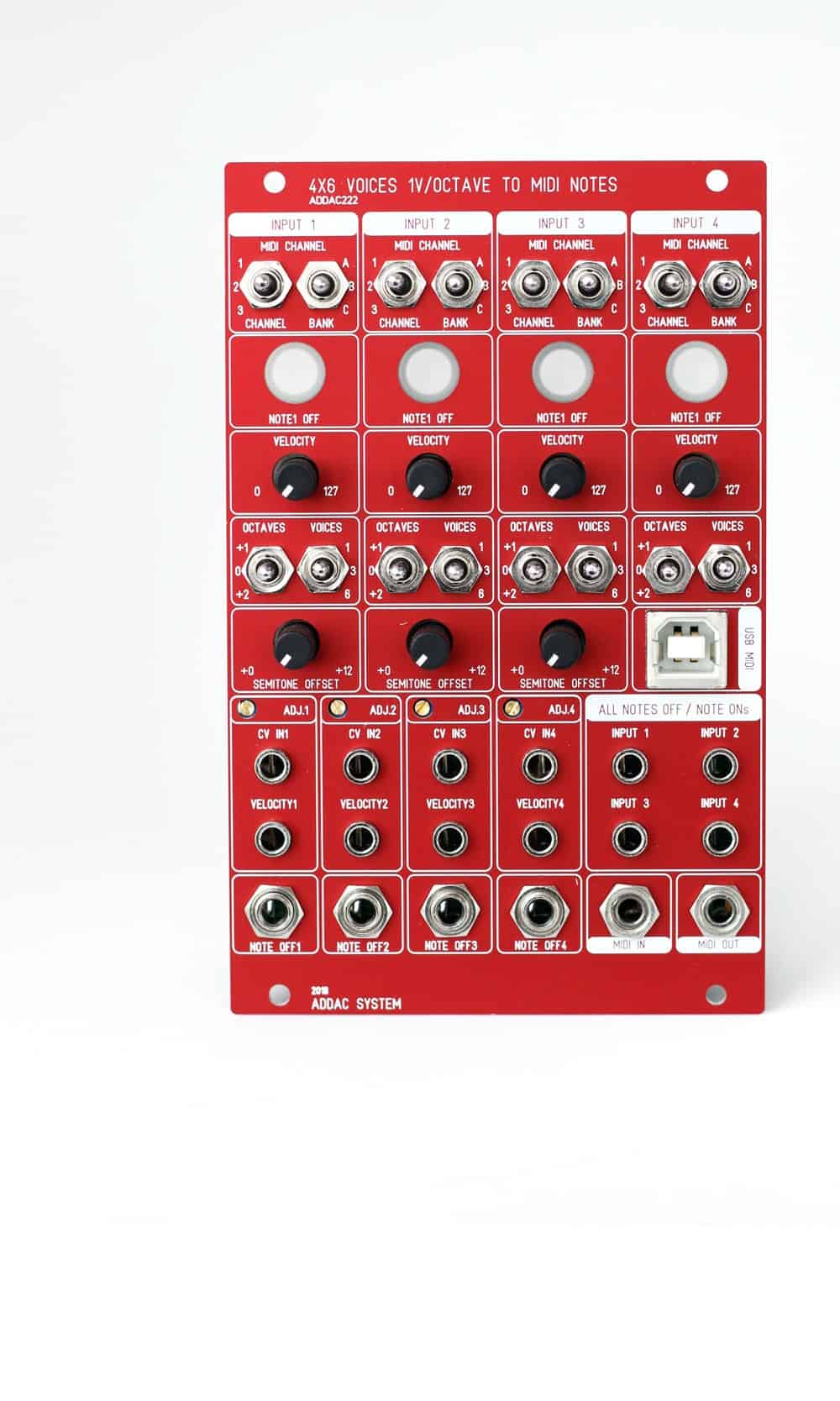ADDAC222 New Firmware, User’s Guide & Signal Flow Diagram
ADDAC222 a Module with 4×6 Voices 1V/Octave to MIDI Notes. This module allows the conversion of CV signals to a stream of MIDI notes.
ADDAC 222 (part of the MIDI Series) converts 4 CV inputs to four distinct polyphonic MIDI NOTES streams, with up to 6 note voices per input. This allows the user to send midi notes to external midi devices straight from your modular: just plug it into your classic synth or your favorite virtual instruments.
ADDAC 222 Features
- The user can send midi notes to 9 different midi channels (3 BANKS with 3 MIDI CHANNELS each). So, any of the 4 cv inputs may independently send its data to one of these 9 midi channels.
- NOTE OFFs may be sent by pressing the NOTExOFF button or as soon as a trigger is received in the NOTE OFFx cv input.
- A trigger sent to the ALL NOTES OFF cv input (1-4) will remove all the notes at the respective MIDI INPUT.
- The OCTAVES switch (one per INPUT) transposes the notes from +1 to +2 octaves, a rate that can be extended by one more octave using the C1-C2 OFFSET knob.
- The ADJ.x trimmer calibrates the amount of voltage per octave to compensate a possible deviation in the CV IN received signal.
- USB MIDI received data will be routed to the MIDI OUT jack.
- In turn, midi data externally sent to the MIDI IN jack will be routed both to the MIDI OUT jack and the USB MIDI port.











